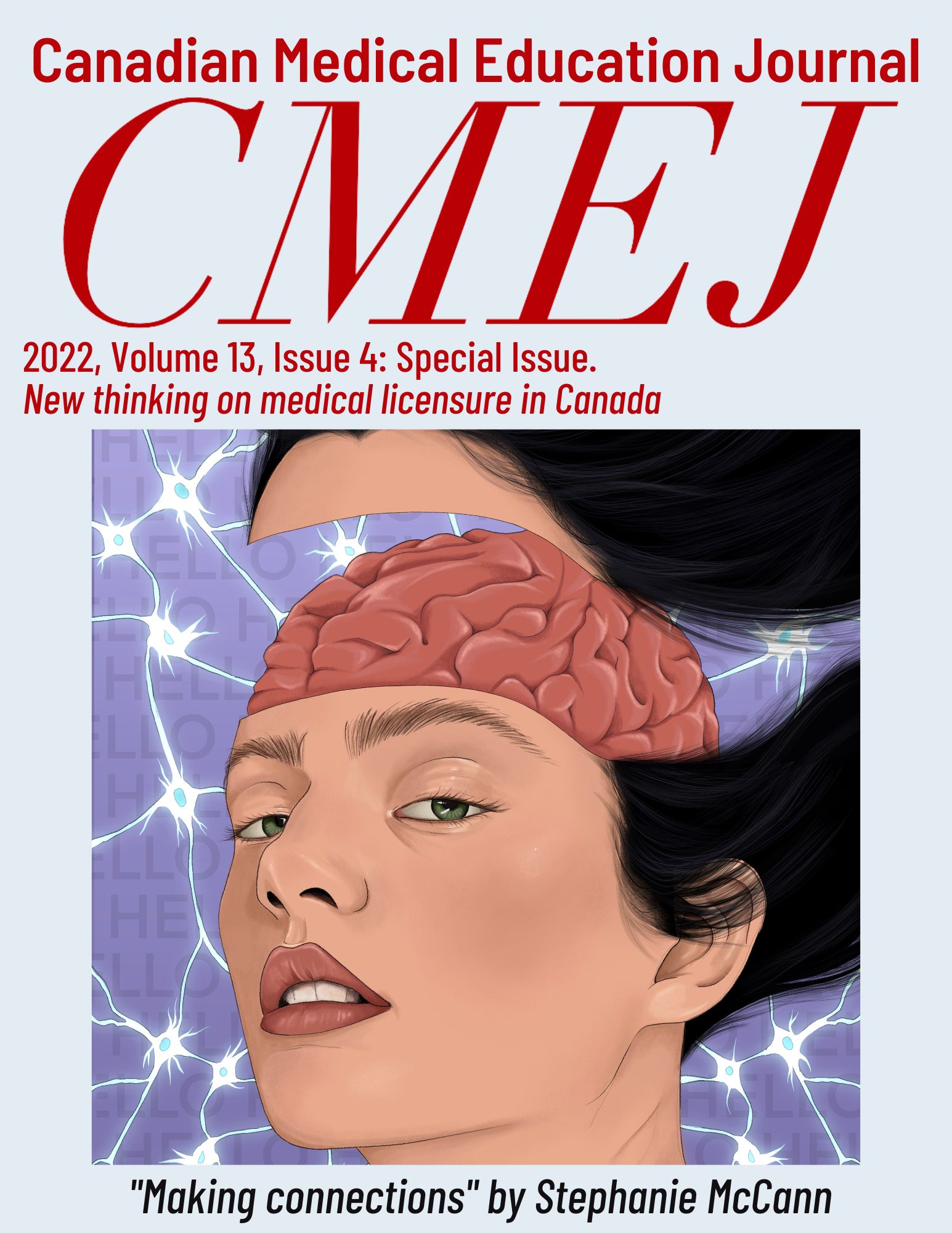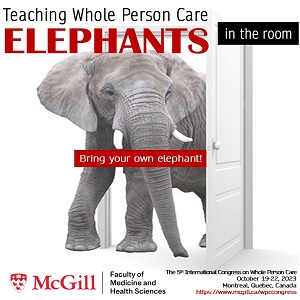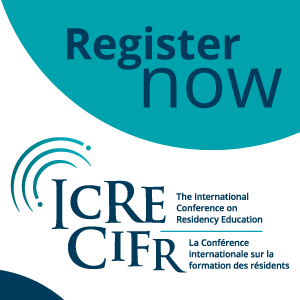Examen d’aptitude du Conseil médical du Canada : un regard approfondi sur la validité de l’EACMC, partie II
DOI :
https://doi.org/10.36834/cmej.73894Résumé
L’examen d’aptitude du Conseil médical du Canada (EACMC), partie II, vise à protéger le public en soumettant les nouveaux diplômés en médecine à une évaluation par le biais de scénarios cliniques avec des patients standardisés. Cet article porte un regard critique quant au rôle de l’EACMC, partie II, dans l’obtention du permis d’exercice en médecine compte tenu des preuves de la validité de l’examen du point de vue de ses conséquences sociales et proposee des orientations futures au regard des développements contemporains en matière d’examens à enjeux élevés. Plus spécifiquement, cet article compare la partie I et la partie II de l’EACMC quant à leur capacité à prédire les tendances dans la pratique future des médecins et à leur caractère généralisable aux diverses spécialités. En soupesant les preuves, l’auteure examine les contre-arguments couramment évoqués ainsi que les implications financières de l’examen pour les candidats et pour le CMC. En conclusion, notre travail formule des recommandations pour l’octroi futur de titres menant à l’obtention du permis d’exercer aux médecins au Canada. Les preuves quant à la validité des conséquences sociales de l’EACMC, partie II sont limitées. Bien qu’également limitées, les preuves de la validité de l’EACMC, partie I, sont plus solides que celles de l’EACMC, partie II, en ce qui a trait à sa valeur prédictive des tendances futures dans la pratique des médecins. En l’absence de données probantes indiquant que les examens mènent soit à l’octroi d’un titre menant à l’obtention d’un permis de pratique en médecine qui ne satisfont pas aux exigences soit à l’amélioration des soins, et compte tenu de l’abandon de l’évaluation de l’apprentissage au profit de l’évaluation pour l’apprentissage, la meilleure manière pour le CMC de favoriser la protection du public serait de travailler en étroite collaboration avec les programmes de résidence et les collèges de spécialité afin de faciliter la mise en place d’un solide programme d’évaluation des compétences essentielles et des compétences cliniques pendant la formation en résidence et à l’occasion de formation continue spécialisée.
Statistiques
Références
Kennedy B. The Part II examination: political exercise or national standard? Cmaj. 1995;152(8):1183-1184. https://www.ncbi.nlm.nih.gov/pmc/articles/PMC1337789/pdf/cmaj00068-0013.pdf
Lougheed T. Is it time to rethink the MCCQE Part II? Can Med Educ J. 2016;7(1):e87-88. https://doi.org/10.36834/cmej.36630
Benusic M. Should the MCCQE II exams go ahead? In: CMAJ Blogs; 2019. https://www.ncbi.nlm.nih.gov/pmc/articles/PMC1337789/pdf/cmaj00068-0013.pdf
Bowmer MI. Response to: Is it time to rethink the MCCQE Part II? Can Med Educ J. 2016;7(1):e89-91.
https://doi.org/10.36834/cmej.36722
Topps M. Why the MCC qualifying examination part II still matters. In: CMAJ Blogs; 2019. https://cmajblogs.com/why-the-mcc-qualifying-examination-part-ii-still-matters/
Sir Thomas Roddick: his work in medicine and public life. JAMA. 1940;115(9):802-803. https://doi.org/10.1001/jama.1940.02810350146035
Reda J. The new LMCC. Cmaj. 1992;146(1):10-11. https://www.ncbi.nlm.nih.gov/pmc/articles/PMC1488208/pdf/cmaj00290-0012a.pdf
Tamblyn R, Abrahamowicz M, Dauphinee D, et al. Physician scores on a national clinical skills examination as predictors of complaints to medical regulatory authorities. Jama. 2007;298(9):993-1001. https://doi.org/10.1001/jama.298.9.993
Norcini J, Anderson MB, Bollela V, et al. 2018 Consensus framework for good assessment. Med teach. 2018;40(11):1102-1109. https://doi.org/10.1080/0142159X.2018.1500016
Cook DA, Brydges R, Ginsburg S, Hatala R. A contemporary approach to validity arguments: a practical guide to Kane's framework. Med Educ. 2015;49(6):560-575 https://doi.org/10.1111/medu.12678
Kane M. Validating score interpretations and uses. Language Testing. 2012;29(1):3-17. https://doi.org/10.1177/0265532211417210
Bachman LF. Fundamental considerations in language testing. Oxford, England: Oxford University Press; 1990.
Boulet JR. Establishing the validity of licensing examination scores. J Grad Med Educ. 2019;11(5):527-529. https://doi.org/10.4300/JGME-D-19-00611.1
Burdick WP, Boulet JR, LeBlanc KE. Can we increase the value and decrease the cost of clinical skills assessment? Acad Med. 2018;93(5):690-692. https://doi.org/10.1097/ACM.0000000000001867
Tamblyn RA M, Bartlett G, Winslade N, et al. The Quebec-Ontario follow-up study of the association between scores achieved on the MCCQE Part II examination and performance in clinical practice. Online: Medical Council of Canada; 2009. https://h5a9c8a9.stackpathcdn.com/media/Tamblyn_Score-Association_MCCQE-Part-II_Clinical-Practice-Performance_2009.pdf
De Champlain AQ, Tian F, Ashworth N, Kain N, Wiebe D. Do national licensing examination scores predict patient complaints as well as physician Opioid and Benzodiazepine prescribing patterns? Online: Medical Council of Canada; 2018. https://h5a9c8a9.stackpathcdn.com/media/IAMRA-2018Poster-A.DeChamplain.pdf
Wenghofer E, Klass D, Abrahamowicz M, et al. Doctor scores on national qualifying examinations predict quality of care in future practice. Med Educ. 2009;43(12):1166-1173. https://doi.org/10.1111/j.1365-2923.2009.03534.x
Bordage G, Meguerditchian AN, Tamblyn R. Practice indicators of suboptimal care and avoidable adverse events: a content analysis of a national qualifying examination. Acad Med. 2013;88(10):1493-1498. https://doi.org/10.1097/acm.0b013e3182a356af
McKendry RJ, Busing N, Dauphinee DW, Brailovsky CA, Boulais AP. Does the site of postgraduate family medicine training predict performance on summative examinations? A comparison of urban and remote programs. Cmaj. 2000;163(6):708-711. https://www.ncbi.nlm.nih.gov/pmc/articles/PMC80166/pdf/20000919s00013p708.pdf
Dore KL, Reiter HI, Kreuger S, Norman GR. CASPer, an online pre-interview screen for personal/professional characteristics: prediction of national licensure scores. Adv Health Sci Educ Theory Pract. 2017;22(2):327-336. https://doi.org/10.1007/s10459-016-9739-9
Eva KW, Reiter HI, Rosenfeld J, Trinh K, Wood TJ, Norman GR. Association between a medical school admission process using the multiple mini-interview and national licensing examination scores. Jama. 2012;308(21):2233-2240. https://doi.org/10.1001/jama.2012.36914
Kulatunga-Moruzi C, Norman GR. Validity of admissions measures in predicting performance outcomes: the contribution of cognitive and non-cognitive dimensions. Teach Learn Med. 2002;14(1):34-42. https://doi.org/10.1207/S15328015TLM1401_9
Medical Council of Canada. Annual Report 2019-2020. Ottawa; 2020. https://h5a9c8a9.stackpathcdn.com/media/MCC-Annual-Report-2019-2020.pdf
Medical Council of Canada. MCCQE Part II Annual Technical Report. Ottawa; 2019. https://h5a9c8a9.stackpathcdn.com/media/MCCQE-Part-II-Annual-Technical-Report-2019.pdf
Norcini JJ, Boulet JR, Opalek A, Dauphinee WD. The relationship between licensing examination performance and the outcomes of care by international medical school graduates. Acad Med. 2014;89(8):1157-1162. https://doi.org/10.1097/acm.0000000000000310
Tatem GB, Gardner-Gray J, Standifer B, Alexander K. While you don't see color, i see bias: identifying barriers in access to graduate medical education training. ATS Sch. 2021;2(4):544-555. https://doi.org/10.34197/ats-scholar.2020-0134PS
Low D, Pollack SW, Liao ZC, et al. Racial/Ethnic Disparities in Clinical Grading in Medical School. Teach Learn Med. 2019;31(5):487-496. https://doi.org/10.1080/10401334.2019.1597724
MacFarlane MM. When a Canadian is not a Canadian: marginalization of IMGs in the CaRMS match. Can Med Educ J. 2021;12(4):132-140. https://www.ncbi.nlm.nih.gov/pmc/articles/PMC8463232/pdf/CMEJ-12-132.pdf
Weggemans MM, van Dijk B, van Dooijeweert B, Veenendaal AG, Ten Cate O. The postgraduate medical education pathway: an international comparison. GMS J Med Educ. 2017;34(5):Doc63. https://www.ncbi.nlm.nih.gov/pmc/articles/PMC5704606/pdf/JME-34-63.pdf
Harden RM. Five myths and the case against a European or national licensing examination. Med Teach. 2009;31(3):217-220. https://doi.org/10.1080/01421590902741155
Archer J, Lynn N, Coombes L, et al. The impact of large scale licensing examinations in highly developed countries: a systematic review. BMC Med Educ. 2016;16(1):212. https://doi.org/10.1186/s12909-016-0729-7
Babla K, Crampton P, Kronfli M. National licensing examinations: what are they good for? Clin Teach. 2020;17(3):323-325. https://doi.org/10.1111/tct.13083
Schuwirth L. National licensing examinations, not without dilemmas. Med Educ. 2016;50(1):15-17. https://doi.org/10.1111/medu.12891
Lockyer J, Carraccio C, Chan MK, et al. Core principles of assessment in competency-based medical education. Med Teach. 2017;39(6):609-616. https://doi.org/10.1080/0142159x.2017.1315082
Karay Y, Schauber SK. A validity argument for progress testing: Examining the relation between growth trajectories obtained by progress tests and national licensing examinations using a latent growth curve approach. Med Teach. 2018;40(11):1123-1129. https://doi.org/10.1080/0142159x.2018.1472370
Téléchargements
Publié-e
Comment citer
Numéro
Rubrique
Licence
(c) Tous droits réservés Alina Smirnova 2022

Cette œuvre est sous licence Creative Commons Attribution - Pas d'Utilisation Commerciale - Pas de Modification 4.0 International.
La soumission d’un manuscrit original à la revue constitue une indication qu’il s’agit d’un travail original, qu’il n’a jamais été publié et qu’il n’est pas envisagé pour publication dans une autre revue. S’il est accepté, il sera publié en ligne et ne pourra l’être ailleurs sous la même forme, à des fins commerciales, dans quelque langue que ce soit, sans l’accord de l’éditeur.
La publication d’une recherche scientifique a pour but la diffusion de connaissances et, sous un régime sans but lucratif, ne profite financièrement ni à l’éditeur ni à l’auteur.
Les auteurs qui publient dans la Revue canadienne d’éducation médicale acceptent de publier leurs articles sous la licence Creative Commons Paternité - Pas d’utilisation commerciale, Pas de modification 4.0 Canada. Cette licence permet à quiconque de télécharger et de partager l’article à des fins non commerciales, à condition d’en attribuer le crédit aux auteurs. Pour plus de détails sur les droits que les auteurs accordent aux utilisateurs de leur travail, veuillez consulter le résumé de la licence et la licence complète.












